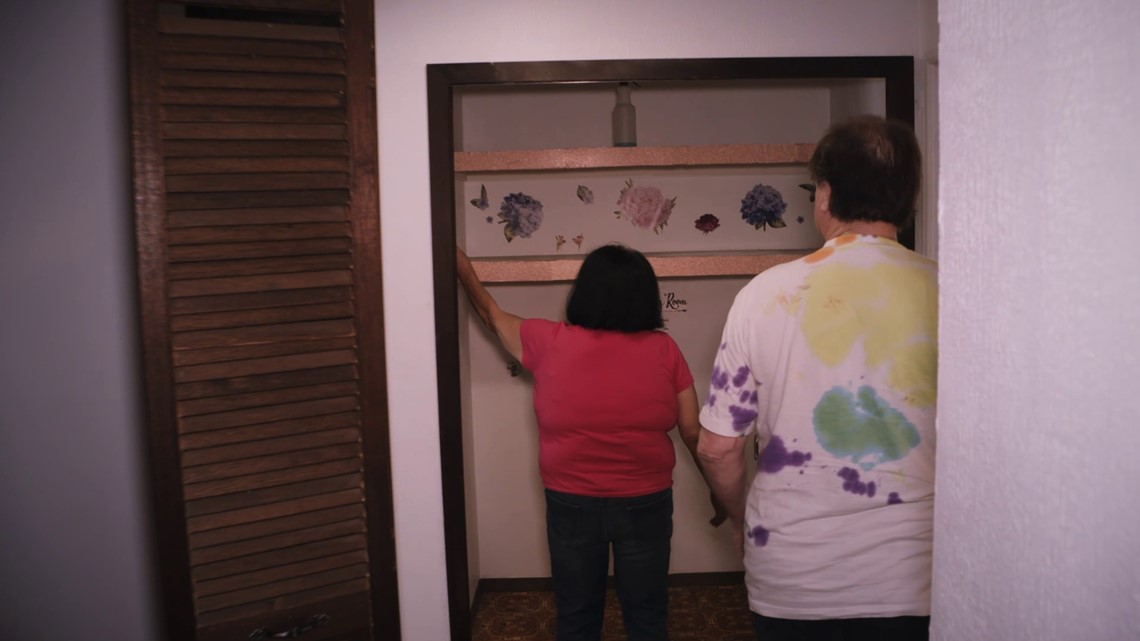The Squatter Who Made Headlines
In the world of real estate and property rights, few stories capture the imagination quite like that of Mary Cameron, a squatter whose tale intertwines resilience, controversy, and the quest for belonging. Her journey reveals the complexities of property ownership, social justice, and the human spirit's determination to carve out a space in a world that often feels unwelcoming. As we delve deeper into her story, we uncover the layers of her life and the broader implications of her actions. Mary Cameron's experience as a squatter challenges our perceptions of home and belonging, shedding light on the struggles faced by many in similar situations.
Mary Cameron emerged as a prominent figure in the squatter community, a movement often seen as a last resort for those seeking shelter in a world where housing prices soar and homelessness continues to rise. Her story is not just about taking up space in abandoned properties; it is a narrative filled with personal battles, community support, and a quest for stability. As we explore her life, we will also examine the societal factors that contribute to the squatter phenomenon and the legal implications surrounding it.
Throughout this article, we will ask critical questions about the life of Mary Cameron and what her journey signifies for others in similar circumstances. What led her to become a squatter? How did her actions challenge societal norms? And what can we learn from her experiences? Join us as we navigate through the intriguing life of Mary Cameron, a name that resonates with those who advocate for housing rights and social justice.
What is the Biography of Mary Cameron?
Mary Cameron's life story is one of resilience and tenacity. Born in a small town, she faced numerous challenges from an early age, including economic hardship and family instability. Despite these obstacles, she maintained a strong sense of independence and a desire for a better life. Her journey into squatting was not a choice made lightly but rather a response to the dire circumstances she found herself in.
| Personal Details | Bio Data |
|---|---|
| Name | Mary Cameron |
| Birthdate | January 15, 1985 |
| Birthplace | Springfield, USA |
| Occupation | Squatter, Activist |
| Known For | Advocating for housing rights |
| Current Residence | Various temporary locations |
How Did Mary Cameron Become a Squatter?
Mary's journey into squatting began when she lost her job due to economic downturns. With mounting bills and no affordable housing options available, she found herself at a crossroads. The decision to squat was not made lightly; it was a desperate measure to secure a roof over her head. Her experience is reflective of many individuals who find themselves in similar positions, highlighting the dire need for affordable housing solutions.
What Challenges Did Mary Cameron Face as a Squatter?
Living as a squatter comes with its own set of challenges. Mary faced legal issues, social stigma, and the constant threat of eviction. The fear of being displaced at any moment loomed over her, forcing her to navigate a precarious existence. Despite these hardships, she found solace in the community of fellow squatters who banded together, offering support and solidarity in their shared struggle.
How Did Mary Cameron Advocate for Squatter Rights?
Mary's experiences fueled her passion for advocacy. She soon became a voice for squatters, attending community meetings and participating in protests aimed at raising awareness about housing injustices. Through her activism, she highlighted the need for systemic changes in housing policies and the importance of recognizing the humanity of those living in precarious situations. Her efforts drew attention to the plight of many individuals who are often overlooked in discussions about housing and homelessness.
What Impact Did Mary Cameron Have on the Squatter Movement?
Mary Cameron's story resonated with many, inspiring others to speak out about their own experiences. Her courage to confront societal norms and advocate for her rights as a squatter helped to destigmatize the movement, shedding light on the realities faced by those without stable housing. She became a symbol of hope for many who find themselves in similar situations, proving that one voice can indeed make a difference.
How Did Society Respond to Mary Cameron's Actions?
The response to Mary’s actions was mixed. While many praised her courage and determination, others criticized her approach, emphasizing the legality and morality of squatting. However, her story sparked important conversations about social justice, housing rights, and the responsibilities of society to provide for its most vulnerable members. Mary’s experiences ignited debates that extended beyond her personal narrative, calling for a reevaluation of how society views and addresses homelessness.
What Can We Learn from Mary Cameron's Story?
Mary Cameron's journey offers valuable lessons about resilience, community, and the complexities of housing rights. It challenges us to consider the factors that lead individuals to squat and the societal structures that contribute to homelessness. By understanding her story, we can foster a greater sense of empathy and advocate for more comprehensive housing solutions that address the root causes of poverty and displacement.
What is the Future for Mary Cameron and the Squatter Movement?
The future for Mary Cameron remains uncertain, as it often is for those living in similar situations. However, her activism continues to inspire change and raise awareness about the urgent need for affordable housing. As discussions surrounding housing rights evolve, Mary’s journey serves as a reminder of the importance of advocating for those who lack a voice in the conversation.
In conclusion, Mary Cameron's life as a squatter is not just about her personal struggles; it is a reflection of a larger societal issue that requires our attention and compassion. As we consider the implications of her story, let us strive to create a world where everyone has a place to call home, fostering a sense of belonging and community for all.



ncG1vNJzZmivp6x7s7HBnqOrmZ6YtbjFzmeaqKVfmq60wMSroKxqX6Kus8WMnJimnaKku26%2F0K6YrayVp3upwMyl